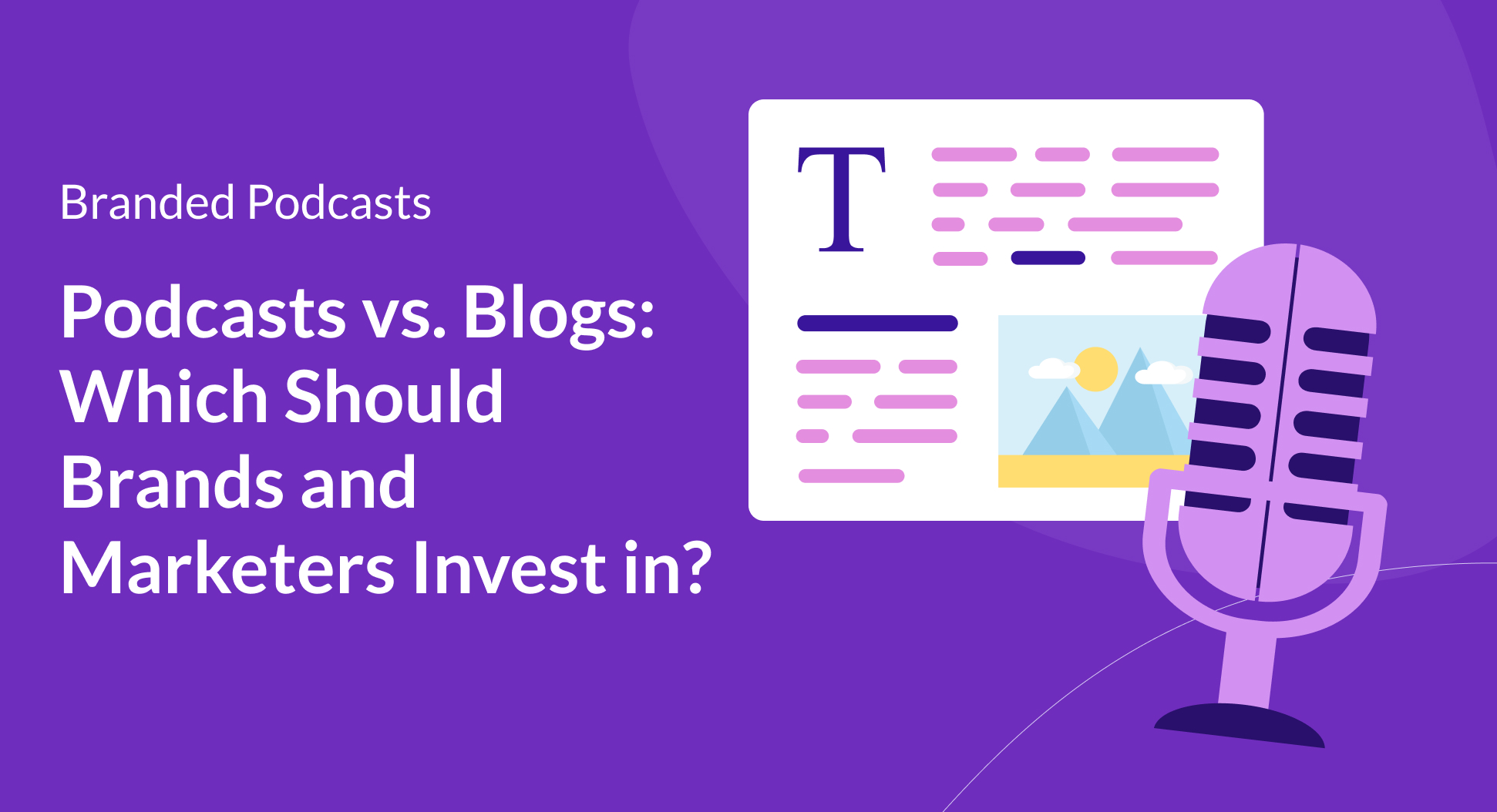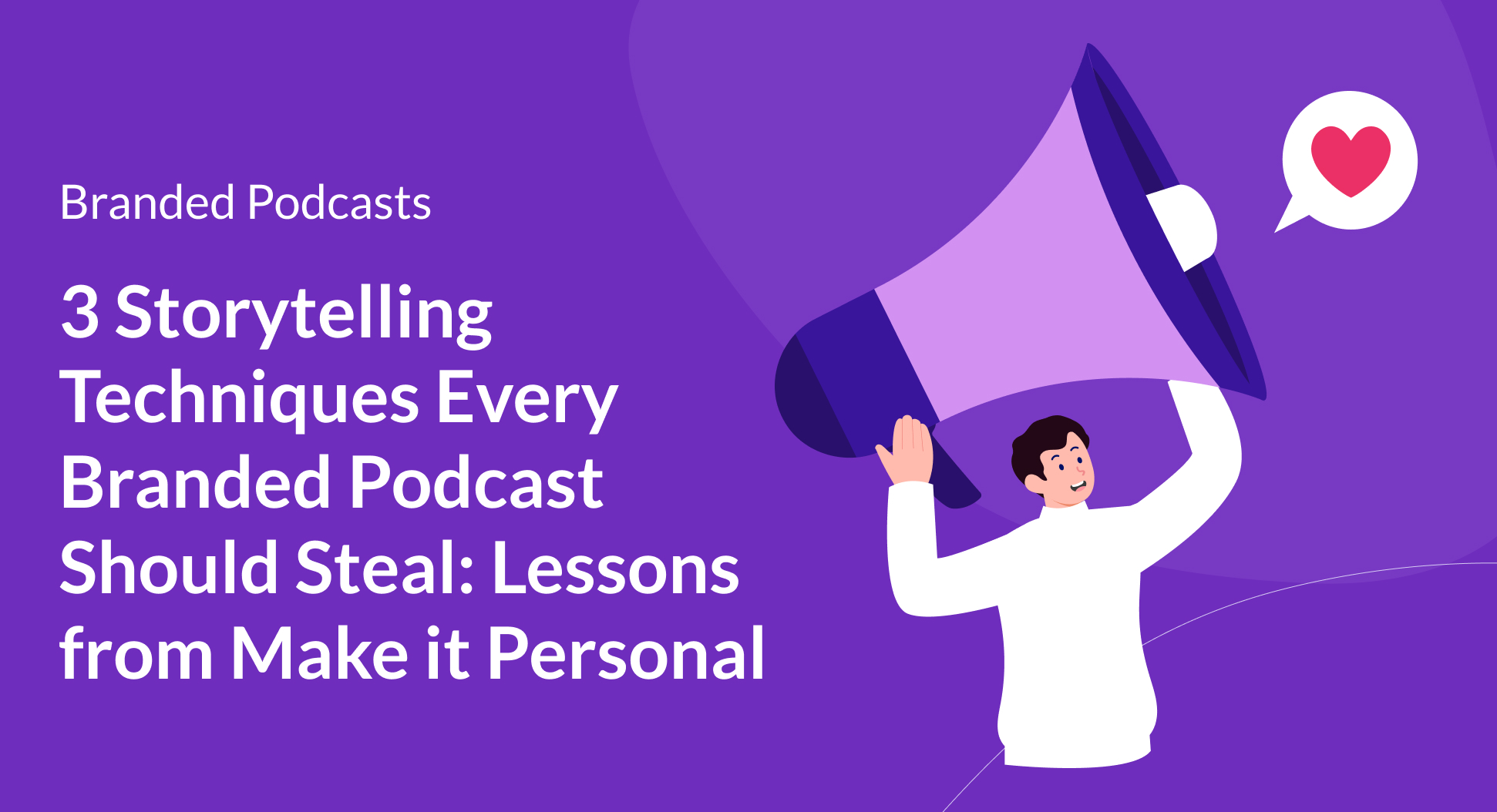Contents
Podcasters share a common goal: attracting more listeners.
While you may have a plethora of exciting podcast ideas, it's crucial to make time for your podcast marketing strategy. This is where repurposing your podcast content comes in.
94% of marketers repurpose their content and according to the State of Content Marketing report by SEMRush, updating and repurposing existing content is the second most effective content marketing tactic for driving traffic and generating leads.
The numbers don’t lie. Repurposing podcast content becomes a powerful strategy for podcasters and marketers to extend their reach and provide valuable content across different platforms.
And in this blog, we delve into the benefits of repurposing podcast content and uncover practical strategies, creative ideas, and actionable tips to help you unlock the full potential of your podcast episodes.
Let’s get into it.
What does it mean to repurpose your podcast content?
Repurposing podcast content refers to the art of transforming your podcast episodes into various other formats, such as blog posts, videos, social media snippets, infographics, and more.
Rather than creating entirely new content from scratch, repurposing allows you to leverage your existing podcast episodes in different ways, extending their lifespan and potentially attracting new listeners.
Beyond reaching a broader audience and increasing SEO, repurposing also enhances the overall impact and value of your podcast. From repurposing interviews into in-depth articles to extracting captivating quotes for social media graphics, there are several possibilities across many marketing channels.
How can I repurpose my podcast content?
Transcriptions
Transcribing your podcast—converting the audio content into written text—is written content that can be repurposed in various ways. You can use excerpts from your podcast as blog posts, social media content, or articles. It allows you to reach different audiences and expand your content marketing efforts.
Furthermore, transcriptions increase your podcast’s accessibility by providing an alternate way of consuming content for hard-of-hearing listeners and foreign language speakers. Similarly, transcriptions enhance the audience experience for people who prefer reading the content rather than listening to the entire podcast and provide a convenient way for them to skim through the text, quickly find specific information, or refer back to important points.
Lastly, transcriptions improve the searchability of your podcast. Search engines can index the text, making it easier for people to find your podcast through relevant keywords and phrases. This can increase your online visibility and attract new listeners.
Videos
One key factor that is motivating podcasters to repurpose their content into video is YouTube, which currently boasts 2 billion logged-in users and only continues to grow. On top of that, recent statistics reveal that 43% of monthly podcast listeners have enjoyed podcast content on YouTube within the past year.
Here are some more reasons why podcasters are adding video to their shows:
Expand your audience:
As discussed, the second largest social media platform, YouTube, serves as a gateway to a massive audience of potential fans. Additionally nearly a third (32%) of Americans prefer listening to podcasts with video — increasing to 46% among podcast listeners who listened to a podcast within the last month.
Video is more conducive to social media:
Autoplay videos without sound are a common feature in social media feeds, meaning social media platforms are optimized for video content rather than audio. Short video snippets or highlights from your podcast can be shared on platforms like Instagram, Facebook, Twitter, or LinkedIn, attracting attention, generating engagement, and driving traffic back to your full podcast episodes.
Enhance SEO:
Videos often perform well in search engine rankings. By leveraging the popularity of video platforms like YouTube, repurposing your podcast content into videos increases the likelihood of your content being discovered by new viewers through organic search. You can optimize video titles, descriptions, tags, and closed captions to improve SEO and increase visibility.
Social media posts
By repurposing your podcast content into social media posts, you can tap into a broader audience. Social media platforms have millions of active users, allowing you to reach people who may not be regulars on Apple Podcasts but are active on TikTok and Instagram. These users, through sharing, directing messaging, and tagging, can then share your podcast with people in their circle. In fact, over half of podcast listeners say they learn about new podcasts on social media.
Social media posts are consumed in bite-sized portions, which aligns with the shorter attention spans of many users. By breaking down your podcast episodes into shorter snippets or highlights, you can grab the attention of social media users who may not have the time or inclination to listen to a full podcast episode.
Through short videos, audiograms, quote cards, or images with text overlays, you can highlight the best parts of your show and entice existing audiences and new audiences to tune in for more.
Blog articles and e-books
Creating a blog post from your podcast is an excellent way to repurpose your content. With the title, research, and transcription already done, the next step is to craft a blog post that caters to your readers' needs.
However, it's crucial to avoid duplicating the text. Unlike a raw transcript, a blog post requires structuring the content and adding additional value to the conversation. Ultimately, the result should be a self-contained piece that stands on its own.
Alternatively, you can also develop a comprehensive long-form content piece. A great example of this approach is author Tim Ferris, who famously repurposed over 200 podcast interviews into an extensive eBook called "The Tools of Titans" for his audience to enjoy.
Transforming podcast episodes into blog articles or e-books opens up possibilities for further repurposing. You can extract key points from the articles to create social media posts, infographics, newsletter content, or even short video clips, extending the lifespan of your content and reaching audiences on various platforms.
Reports and guides
Branded podcasts will often invite industry experts to share their expertise, offer meaningful statistics, and provide actionable insights for listeners. All of this content translates well into reports and guides.
A well-crafted report or guide showcases your expertise on a particular topic. By repurposing your podcast content in this format, you can position yourself as an authority and thought leader in your niche. This can lead to increased credibility, opportunities for collaborations, and invitations for speaking engagements or interviews.
Importantly, reports and guides can be used as effective lead magnets or opt-in incentives to grow your email list or gather more information from your audience. By offering valuable written content derived from your podcast, you can entice listeners to sign up for your newsletter, subscription, or mailing list.
Audiograms
An audiogram is a short video clip or image with an audio waveform overlaid, typically accompanied by captions or subtitles with relevant branding, and is designed to be shared across social media and websites.
Audiograms are created to grab attention and engage potential listeners by providing a preview of the audio content in a visually appealing and easily shareable format. They capture the essence of the podcast episode, highlighting interesting or intriguing moments, quotes, or soundbites to generate interest and entice people to listen to the full episode.
Consistently using audiograms as part of your podcast promotion helps establish a recognizable visual identity for your brand. By incorporating your logo, colors, and overall branding into the audiograms, you create a cohesive and visually consistent presence across different platforms.
Ultimately, audiograms serve as teaser content for your podcast episodes. By sharing captivating snippets with visually appealing waveforms, images, and text captions, you can pique the interest of potential listeners.
Why should I be repurposing my podcast content?
To summarize the content above, here are four main reasons why marketers are repurposing their podcast content.
a) Increased reach:
By repackaging your content into different formats, you can engage with people who prefer consuming information in different ways. This enables you to tap into new audiences and attract individuals who may not typically listen to podcasts.
b) Enhanced engagement:
Not everyone has the time or inclination to listen to a full podcast episode. By accommodating these preferences, you can capture the attention of a wider audience and provide them with content in formats they find more convenient.
c) Diversified revenue streams:
Repurposed content opens opportunities for monetization beyond traditional podcast sponsorships including brand collaborations, sponsorships, and advertising deals that extend beyond the audio realm.
d) Optimize SEO:
By transcribing your podcast episodes or creating related written content, you increase the chances of appearing in search engine results for relevant keywords and topics, improving your SEO efforts and attracting organic traffic to your website or podcast.
e) Saved time and resources:
Repurposing content is all about turning one core piece of content into various additional assets to use across platforms, channels, and audiences. This strategy can save your team time, money, and additional resources by avoiding the need to create unique content for all of your marketing channels.
Are you ready to start maximizing your podcast marketing strategy?
By repackaging audio material into various formats, such as blog posts, social media snippets, and video clips, content creators can reach wider audiences and maximize their impact.
Repurposing allows for increased visibility, improved SEO rankings, and enhanced engagement, while also saving time and effort in content creation. Moreover, it fosters a sense of versatility and adaptability, enabling podcasters to connect with their audience through different mediums and cater to diverse preferences.
So, if you're not repurposing your podcast content yet, it's time to harness the potential of repurposing to expand your reach and solidify your brand's presence in the ever-evolving digital landscape.
If you’re interested in learning more about content repurposing and podcast marketing, please reach out to our team.


.avif)



.png)

.png)




.png)
.png)
.png)
.png)